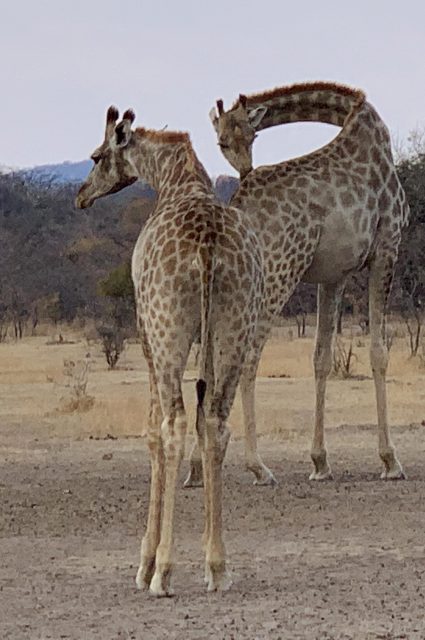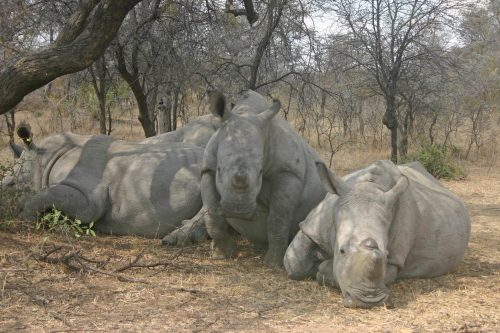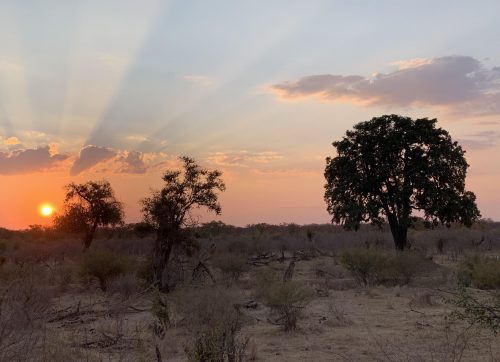Our accommodation in Matobo Hills is in gingerbread-house bungalows that are nestled up against the rounded boulders characteristic of the area.


Rock hyrax scramble about in these rocks – and on my bungalow’s roof, waking me up in the morning. 
I look out the window and spot a klipspringer, a tiny antelope (50-60 cm high) with huge brown eyes and eyelashes to die for. When we are not looking at ancient paintings in various caves, we clamber about in the boulder landscape.



From our local guide we learn about medicinal plants. He shows us which plants can be used to staunch bleeding, which have an antibiotic effect, which are antiseptic and which are deadly poisonous and can be used for hunting.

We also see loads of wildlife on our forays into the bush, including leopard, klipspringer, bushbuck, kudu, zebra, warthog, impala, baboon, hyrax, Verreaux’s eagle (which has hyrax on its menu), little bee-eater, fork-tailed drongo, hornbill – and giraffes necking.





We visit a reserve where there are four white rhinoceros habituated to humans. That does not in any way mean they are tame. No siree! Although we can approach them very closely, and they look like they are snoozing, they have their tiny, near-sighted eyes on us, their ears constantly moving to detect our presence, and their feet positioned so that they can quickly rise up and either chase us off or run away from us.

White rhino are not white, but have that name from the Afrikaans word for “wide”. This is because their muzzle is wider than the so-called black rhino (which are not black), which have a pointed muzzle.

Weighing in at 1600 kg (female) to 2400 kg (male), rhinoceros are one of the largest land mammals. The size of their body, head and horns are enough to keep most enemies at bay, although not humans with weapons, unfortunately. Based on no scientific evidence whatsoever, rhino horns are used in Asia to treat a variety of ailments, so rhino are highly threatened by poachers.

Rhino take their time when having sex; copulation lasts for about half an hour and with only one mounting. The adoring couple hang around with each other for up to six days after mating, perhaps re-living that one glorious, protracted act of love-making.
Interesting trivia: A group of rhino is called a “crash of rhino”.
The sunsets in Matobo Hills are beautiful, and we enjoy them each evening before setting of for our next destination: Hwange National Park.



